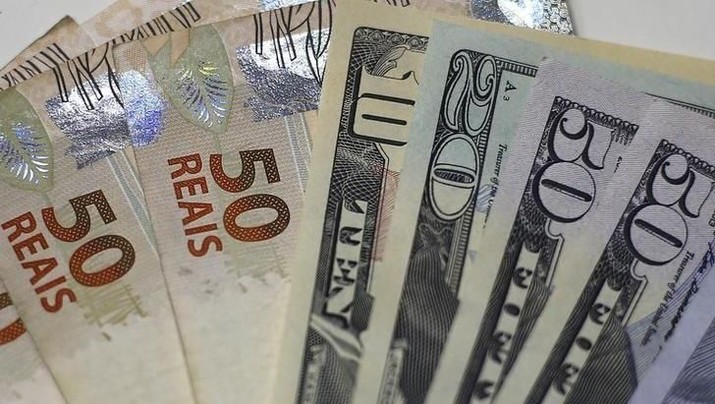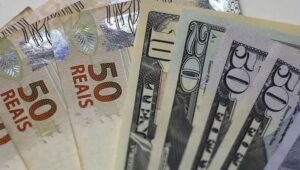

The US Dollar is currently on a meteoric rise, shaking up the global financial landscape in its wake. As the greenback skyrockets to new heights, it’s casting a shadow over several major currencies worldwide. Let’s delve into how this soaring USD is impacting five key currencies across the globe and what factors are at play in this high-stakes currency game.
Impact on global currencies
The skyrocketing US Dollar is sending ripples across global currencies, creating a domino effect in the world of finance. As the USD climbs higher, other currencies feel the pressure to adjust their exchange rates accordingly. This can lead to both challenges and opportunities for countries around the globe. For some currencies, a strong USD means cheaper imports but also reduced competitiveness in export markets. On the flip side, it could make their exports more attractive to American consumers. The fluctuating exchange rates can impact trade balances, inflation rates, and overall economic stability.
Central banks closely monitor these currency movements to ensure they don’t destabilize their economies. They may intervene by adjusting interest rates or implementing monetary policies to counteract the effects of a soaring US Dollar on their own currency’s value. In this interconnected financial landscape, what happens with the US Dollar reverberates far beyond American borders. It underscores how intertwined global economies have become and how crucial it is for policymakers to navigate these currency fluctuations strategically and prudently.
Euro – Factors affecting its exchange rate with USD
The Euro, the official currency of 19 out of the 27 European Union countries, is closely tied to the US Dollar in global markets. Several factors influence its exchange rate with the USD. One significant factor is interest rates set by both the European Central Bank and the Federal Reserve. Higher interest rates in one region can attract foreign investors, affecting currency values. Political stability and economic performance also play a crucial role in determining the Euro’s strength against the US Dollar. Any political uncertainty or economic instability within Eurozone countries can lead to fluctuations in their currency’s value relative to the USD.
Trade relations between Europe and the United States impact how these currencies interact. Trade agreements, tariffs, and trade balances can all affect exchange rates between Euro and USD. Various complex elements contribute to shaping how these two major currencies move against each other on international exchanges.
Chinese Yuan – How trade tensions and economic policies are influencing its value against USD
The Chinese Yuan has been closely watched as trade tensions between the US and China continue to escalate. With ongoing disputes over tariffs and intellectual property rights, the value of the Yuan against the USD has been fluctuating. As economic policies are adjusted in response to these tensions, investors are monitoring how China manages its currency in relation to the strong US Dollar. The People’s Bank of China plays a significant role in influencing the exchange rate by setting a daily reference rate for the Yuan.
In recent years, there have been accusations that China manipulates its currency to gain an unfair advantage in international trade. These allegations further complicate the dynamics between the Chinese Yuan and the USD, creating uncertainty in global markets. Despite efforts by both countries to reach agreements on trade deals, lingering uncertainties contribute to volatility in the exchange rates between these two powerhouse currencies.
Canadian Dollar – The impact of oil prices and US-Canada trade agreements on its exchange rate with USD
The Canadian Dollar, also known as the Loonie, is significantly influenced by oil prices due to Canada’s status as a major oil producer. Fluctuations in crude oil prices directly impact the value of the CAD against the USD. When oil prices rise, so does the Canadian Dollar. Moreover, trade agreements between the US and Canada play a crucial role in determining the exchange rate between the two currencies. Any changes or developments in these trade agreements can cause fluctuations in the value of both currencies.
The ongoing negotiations and decisions surrounding trade policies can create uncertainty in forex markets and lead to volatility in currency values. Traders closely monitor these dynamics to make informed decisions when trading CAD/USD pairs. It’s essential for investors and traders involved with these currencies to stay updated on factors such as oil prices and trade agreements that influence the Canadian Dollar’s exchange rate with the US Dollar.
Japanese Yen – Why it’s seen as a safe haven currency during times of a strong USD
The Japanese Yen, known for its reputation as a safe haven currency during times of a strong US Dollar, continues to attract investors seeking stability in uncertain economic climates. As the USD climbs higher, many turn to the JPY as a reliable asset amidst market volatility. Its resilience and perceived safety serve as a shield against the fluctuations caused by the skyrocketing US Dollar. The interplay between these two currencies highlights the intricate web of global finance and how each movement impacts economies worldwide. Stay tuned for more insights on how international currencies navigate through these challenging times in the ever-evolving landscape of finance.





